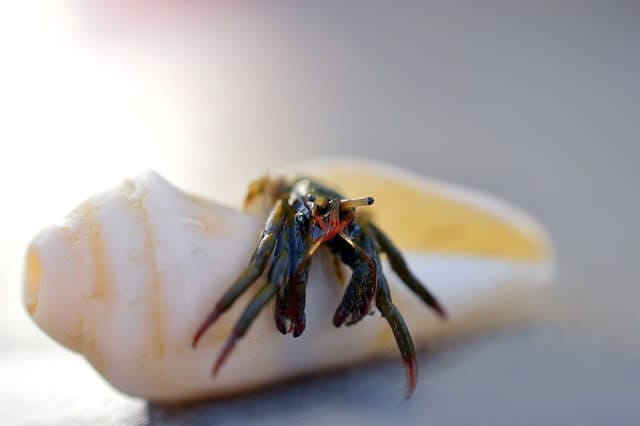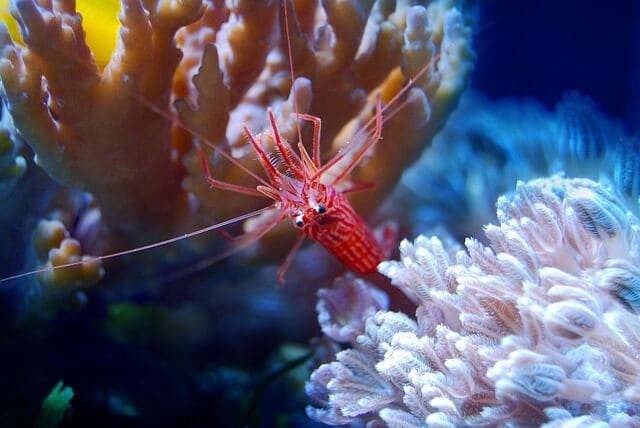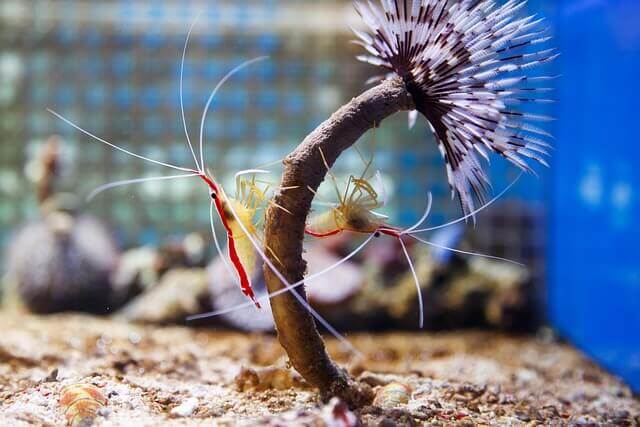The Ultimate Clean-Up Crew For Your Reef
Welcome to the ultimate showdown of the ocean’s finest clean-up crew! In this competition, we’ll explore the various small scavengers often found in tidepools and see how they stack up when it comes to keeping a reef aquarium clean. Let’s dive into the contenders and their unique abilities that make them invaluable members of a reef tank.
Contestant #1: Hermit Crabs

Appearance: Hermit crabs are known for their resourcefulness, living in discarded snail shells to protect their soft, coiled abdomens. With a pair of large claws, they are ready to take on any mess.
Skills and Benefits:
• Detritus Disposal: Hermit crabs are top-notch detritivores, eagerly consuming leftover food, algae, and dead matter.
• Substrate Cleaning: Their constant scavenging helps keep the tank substrate clean and free of waste buildup.
Care Tips:
• Provide a variety of empty shells for them to switch into as they grow.
• These hardy critters are easy to care for and make a great addition to any reef tank.
Contestant #2: Nassarius Snails

Appearance: Sporting elongated, conical shells and long siphons, Nassarius snails are the hidden gems of the sand bed, often buried with just their siphons visible.
Skills and Benefits:
• Sand Sifting: Nassarius snails are experts at aerating the substrate, preventing harmful gas buildup, and consuming detritus and uneaten food.
• Efficient Cleaners: Their burrowing action ensures the sand bed stays healthy and clean.
Care Tips:
• A sandy substrate is essential for their burrowing habits.
• Regular feedings are necessary if natural detritus is scarce.
Contestant #3: Peppermint Shrimp

Appearance: These tiny, translucent shrimp with red stripes are not just pretty faces; they’re tough on pests and detritus alike.
Skills and Benefits:
• Pest Control: Known for their ability to tackle pest anemones like Aiptasia.
• Scavenging Experts: They diligently scavenge for leftover food and detritus, keeping the tank spotless.
Care Tips:
• Peaceful and easy to care for, making them a perfect fit for community reef tanks.
• Ensure they have plenty of hiding spots to feel secure.
Contestant #4: Emerald Crabs

Appearance: With their vibrant green colour and flattened claws, emerald crabs are as functional as they are beautiful.
Skills and Benefits:
• Algae Control: Emerald crabs are champions at tackling bubble algae and other unwanted algae types.
• Debris Management: They also play a crucial role in scavenging detritus and leftover food.
Care Tips:
• Provide plenty of hiding places in the tank.
• Supplement their diet with algae wafers if natural algae is limited.
Contestant #5: Cleaner Shrimp

Appearance: Cleaner shrimp, such as the Scarlet Skunk Cleaner Shrimp, boast bright red and white colours with long white antennae, ready to clean up the competition.
Skills and Benefits:
• Cleaning Services: Besides scavenging, they offer cleaning services to fish, removing parasites and dead skin.
• All-Around Scavengers: They are excellent at picking up leftover food and detritus.
Care Tips:
• Provide them with regular feedings and a variety of food.
• They thrive in peaceful community tanks.
The Winner
Each contestant brings their unique set of skills to the table, making it hard to choose a single winner. The real victory lies in combining these scavengers to create the ultimate clean-up crew for your reef tank. Together, they ensure a healthy, clean, and balanced aquarium environment.
By incorporating a diverse group of tidepool scavengers, you harness the strengths of each species, ensuring your reef tank remains pristine and vibrant. Whether it’s the resourceful hermit crab, the efficient Nassarius snail, the pest-controlling peppermint shrimp, the algae-busting emerald crab, or the all-around cleaner shrimp, your reef will benefit from their combined efforts.
So, gather your clean-up crew and let these tidepool champions work their magic in your reef tank!








